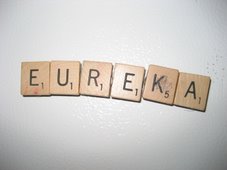In the last two weeks, Grandma C took the kids to the Santa Cruz Mission, and then to Yosemite, to learn more about Native Californians. Next week we are going to Chaw'se Indian Grinding Rock to learn more. We have been reading some of the pamphlets they picked up, and The Ohlone People of Central California, an educator's guide, by Douglas Petersen and Linda Yamane, and some articles off of the internet about current California Indian Cultural issues. For example, we talked about how some of the modern Ohlone community is trying to get recognition from the Federal Goverment, and why they can have different laws on Indian land.
We studied creation stories, housing, regions, marriage traditions, games, food staples and gender roles. They each wrote some comparisons between Miwok and Ohlone traditional cultures.
Sam: The Ohlone are Indians that live on the coast. They believe that they were created by hawk, crow and hummingbird out of clay. Also, different tribes of Ohlone speak eight different languages. An interesting fact is that there are sometimes 500 people in one village. They have awesome tule houses that can hold 10 or 15 people. Their square acorn granaries are made from tule too! They have an outside dance place and an inside ceremony place. That is a few facts about Ohlone Indians.
The Miwok are Indians that live in the Sierra Nevadas, on the coast, and in the valley of California. They believe that they were made by Coyote out of sticks. Instead of having a separate dance place than their ceremonial place, they had them together in a ceremonial roundhouse.
C: The Ohlone and Miwuk are alike and different in many ways. First, they make acorn mush the same way (more on that later), and are both tribes of Native American people. Secondly, the Miwuks have houses of bark, whiel the Ohlones have reed housing. Third, the Miwuk have covered granaries while the ohlone have mere baskets. Last but not least, the Miwuk thought they used to be crows while the Ohlone thought that they are made from rocks, black dye and clay. These two tribes are alike and different in many ways.
skip to main |
skip to sidebar


Where will their adventures take them?

We moved to www.eurekafamily.blogspot.com in June 2011

TinTin and Snowy

Where will their adventures take them?

About Us
- C =Boy, aged 13, K=Girl (AKA Kit), aged 11, Mom & Dad
- We are a couple of kids in the southern Sierra Foothills. We (used to) homeschool and like to travel and do other stuff kids like to do. We also like to ride bikes. We named our Blog "Eureka!" because that's what Tintin says when he discovers something, and its the slogan for our state, California. (And, Mom made us do it.)
Our Pets
- Acrobat (chicken)
- Bertha (chicken) (RIP)
- Cedar (chick)
- Chessie the superkitten! aka Fuzzo or Baby Bookins
- Chipper (chick) (RIP)
- Glay (chickenRIP)
- Lulu (dog who thinks she's a cat)
- Pecker & Blackie (twin chickens)
- Poppy (chicken)
- Pumpkin (chicken)
- Rodher (Chicken)
- Sneezer (chick) (RIP)
- Toeser (scaredy cat)
- Weechee (ladybug) (probably dead)
- Whiner RIP (cat who thought she was a dog)
- Witchking (chick) (RIP)
Favorite Movies
- Strange Brew
- Harry Potter Series (both of us)
- Star Wars Series (C)
- Strange Brew
- Lord of the Rings
Favorite Books
- Ranger's Apprenticee
- Percy Jackson
- Sammy Keyes
- The Floating Island
- Hitchhiker's Guide to the Galaxy
- Captain Bluebear
- Lord of the RIngs
- Harry Potter Series